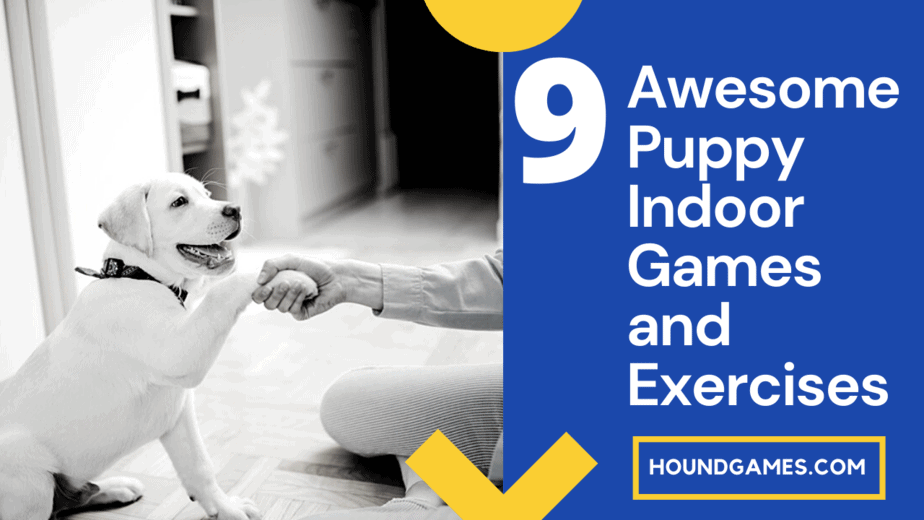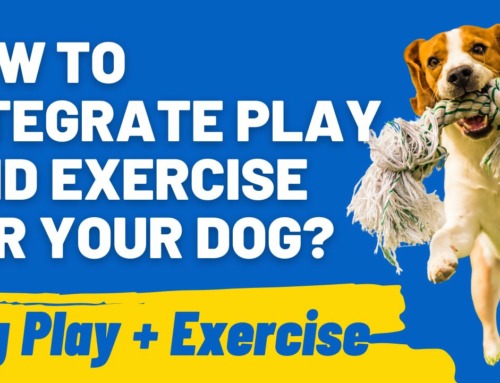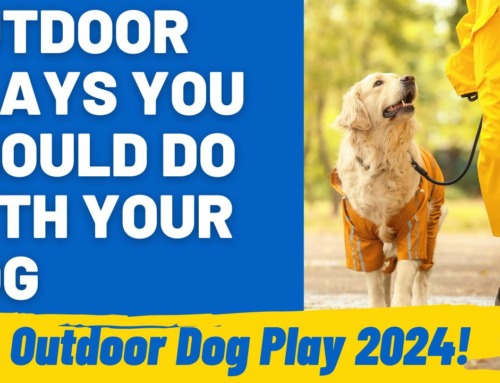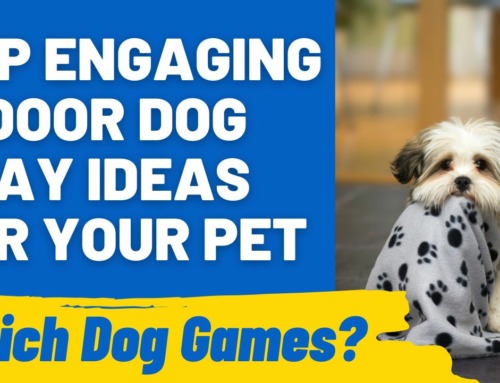Whether it’s recent events, a rainstorm, a heatwave, or protecting your puppy from viruses, chances are you’re going to have a day when taking your puppy outside to exercise isn’t an option. If you’re lucky, you may have a puppy on the lazy side who doesn’t mind spending the day with you on the couch!
But for most puppies, they’ll be eager beavers wanting to burn some excess energy. Research shows that a lack of exercise is the number one factor behind anxiety issues, like noise phobia and separation anxiety.
What’s more, a bored puppy is likely to cause a host of problems, ranging from destructive chewing, digging, whining, excessive barking, or wrecking your favorite shoes!
So how do we keep our puppies physically active and mentally stimulated when we can’t go outside? Let’s get down to it!
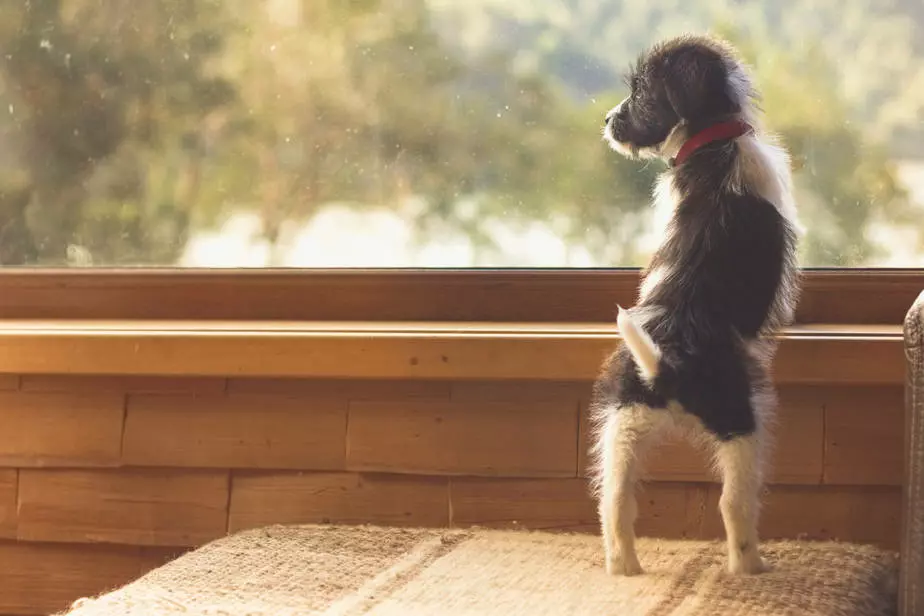
How to safely exercise a puppy indoors?
First things first, puppies are prone to excitement just like children, so we need to ensure their play and exercise area is secured correctly and proofed to prevent any injury or damage.
Before you got your puppy, you probably went through the motions of getting your house puppy-proofed. Nevertheless, a rambunctious young Great Dane can still cause no end of damage if playing and exercising indoors.
It’s also important that we keep in mind that puppies are fragile. For more information about the limits of puppy exercises, we wrote a complete guide here.
Make a quick scan of this checklist to minimize any potential problems that may occur:
- Block off stairs for a young pup. While throwing a ball up the stairs is an excellent indoor exercise for an adult dog, jumping and hopping can be bad for a growing puppy’s bones and joints.
- Remove any glass furniture or cups and glasses that can get knocked off tables and broken or smashed.
- Keep the kitchen off-limits. Not only is this where most of the sharp objects are, but this is also where the cooking happens, and dangerous foods like raisins or toxic cleaning products might be kept.
- Look out for slippery rugs and tiled floors. Remember, puppies raised on slippery surfaces or with access to stairs under the age of three months have a higher risk of developing hip dysplasia.
- Remove any electrical equipment that your puppy might be tempted to chew on while your back is turned. This includes chargers, cables, cords, and remotes.
- All chemicals, medications, beauty products, or supplements should be locked away.
- If your dog has access to the garage, make sure that any garden or motor hazards such as plant poisons or antifreeze are locked away on a high shelf.
Finally, if you have a large breed puppy, or a tiny one, such as a toy poodle, don’t engage in too much jumping.
Small breeds can hurt themselves leaping from high furniture, and large breeds should avoid jumping altogether until they are fully grown and their hips and elbows have been cleared of any problems by a vet.
This includes tossing a ball or frisbee into the air for your puppy to catch.
If you’re concerned about playing too rough with your puppy, we’ve written a good post on this subject.
How to keep your puppy busy at home: the 9 best games and activities to play indoors
Luckily for owners of medium and high-energy puppies, there is a wide range of activities to keep your puppy busy inside.
The key is to balance mental stimulation with physical exercise since using the two together can tire your puppy out faster than either one on its own.
1. Play Tug
A simple and effective favorite game for puppies is a game of tug.
Ensure the surface they play on is carpeted so that they have some grip, and then wave their favorite toy around and encourage them to bite and pull.
Tug is a great way to build confidence in a puppy, especially if they are a little fearful or insecure. In these cases, make sure they always “win” and get to walk away with the toy.
Instead of chasing after them, encourage them to bring the toy back to you to continue the game.
A word of warning; with some dominant breeds, tug is best avoided as it becomes a way for them to actively test their strength against yours. You may not want a dog that will grow into a 130-pound Rottweiler getting into this habit.
Another pro-tip is to keep the excitement of the game regulated.
That is, on a scale of one to ten, where one is practically asleep, and ten is climbing the walls, you want your puppy somewhere around a five or six.
They should be enjoying themselves but never become over-excited or overstimulated, as this can lead to harmful behaviors like nipping or jumping on you. Plus it teaches them when enough is enough.
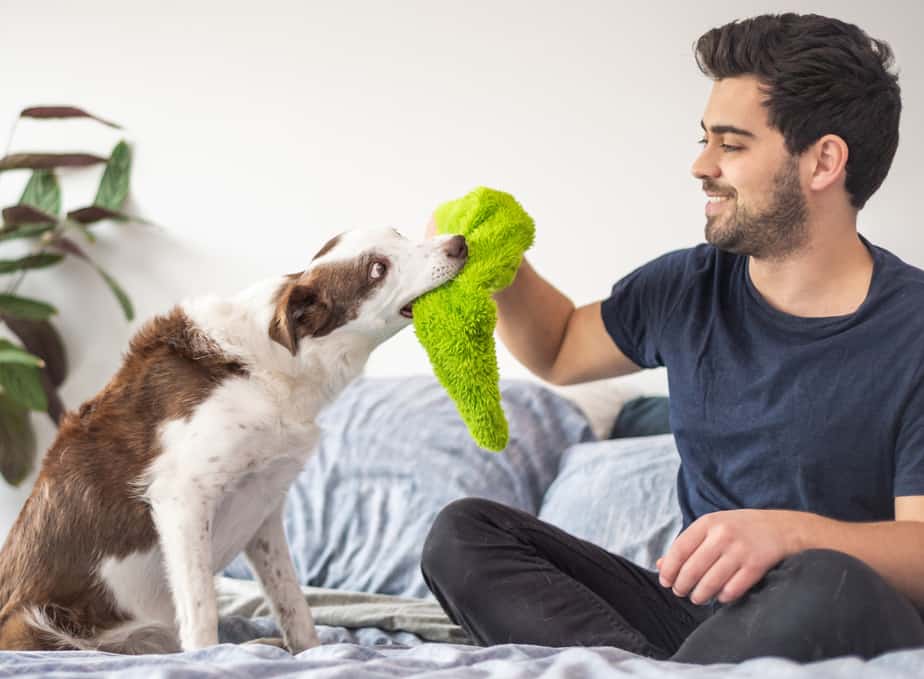
2. Go Dog Fishing with a Flirt Pole
You can buy a flirt pole online or make one at home. Simply tie a favorite toy to the end of a stick or pole with a few feet of rope between, like a fishing pole for puppies.
Keep in mind, like tug, this game needs a little space, so you may want to clear out an area in your living room to prevent any accidents.
The idea of dog fishing or luring your pup with a flirt pole is to use the stick to drag or wave the toy in front of them and encourage them to give chase and catch it.
This is a particularly great game for dogs with a high prey drive like German Shorthaired Pointers or Vizslas.
However, like tug, the most common mistake that owners make with this game is to whip the toy around so fast that their dog becomes overexcited and frenzied trying to get it. This should not be the aim of the game.
Instead, lure the puppy slowly and don’t encourage mindless chasing. See this as an opportunity to teach them self-control.
To begin with, keep the movements of the toy slow and controlled. Encourage your puppy to stalk the toy with care so that they learn that self-discipline is what gets them the reward, never manic chasing.
Over time, the flirt pole is a great tool to teach impulse control.
3. Play hide-and-seek
Hide-and-seek is a favorite game for many puppies since it involves most of their senses. You can do this in two main ways, depending on how good your puppy’s obedience is.
One is to put your dog in a down and tell them to wait—remember, in standard obedience, “stay” means that they need to stay until you return to them, while “wait” means that you will release them from a distance.
Hide somewhere like a closet or behind a bedroom door and call your puppy. You can use your voice to guide them to where you are. Be sure to make a big fuss when they find you!
If your pup’s down/wait isn’t strong enough for you to exit the room without them following, then wait till they are distracted to run and hide. You can also ask a family member to hold them until you call.
By the way, hide-and-seek is also a great way to start conditioning your puppy to come when called.
4. Make time for training
Even though a training session should never be more than one to five minutes for a young puppy, the mental exercise can still wear them down just as fast as any physical exercise.
Keep in mind that older puppies can go up to ten or even fifteen minutes if they don’t get bored by the repetition and they have the focus, as in the case of some working breeds.
Either way, you can scatter training sessions throughout the day with your puppy, so long as you keep the sessions short.
Basic obedience training is essential, and you can start this with clicker training and positive reinforcement.
You can also make training new things part of your dog’s routine indoors. For instance, you can use our Puppy Toy Mat with Teething Chew Toys to begin teaching the “place” command.
You can also give your puppy jobs to do by teaching them tricks to do around the house.
5. Make your puppy work for their food
The problem with feeding your puppy in a bowl is that they can typically scoff it down in two minutes, and that’s the end of the experience.
Luckily, there are plenty of more exciting ways to feed your dog that can keep them more mentally and physically active.
- Feed them in puzzle toys. There are plenty on the market that engage your puppy’s brain for them to get their food. We made a puzzle toy specifically for this called the Hide’n’Treat. They’re like Legos for dogs. You can find them here: Hide’n’Treat Puzzle Toys. They are also great for teething and keeping them mentally stimulated.
- Scatter treats like the Wellness Soft Puppy Bites Lamb & Salmon Recipe Grain-Free Dog Treats around a puppy-proofed room and let them use their nose to sniff them out. (You can also add these treats inside of the Hide’n’Treat toys!)
- Keep a mix of treats and kibble in a pouch around your waist to reward your pup throughout the day for good behavior.
- Consider getting a snuffle mat for your puppy, as they engage their sniffing, which releases endorphins.
6. Play “find the toy”
Just like finding the treats, a game of search and find for a favorite item can really take it out of your puppy. You can teach them to do this by the following method:
- Start by using a favorite toy, such as a ball, and placing it on the floor.
- As your puppy goes to get it, say “find the ball!” and then praise them when they have it. If they don’t want to give the toy back, offer a treat to trade them for it. But keep the treats mostly out of sight and smell, so they don’t get distracted.
- Repeat this a few times until your puppy knows the action of retrieving the ball or other toy is what gets the reward. Some puppies may not have a high toy drive, so don’t overdo it. Start with only doing it two or three times and ending the game while they are still interested. Then make the toy disappear, so it stays a high-value item. It can take several days to really build interest in the toy.
- Next, start adding other items like a cup or a pen. Reward heavily if your puppy still returns with the correct toy. Gradually up the distractions by placing other toys down. If your puppy comes back with the wrong toy, turn around and ignore them for three to five seconds, then guide them back to the right toy and make a fuss when they show an interest in it.
- Start placing the toy further and further away. Always set your puppy up for success by only advancing in small increments. Gradually, start putting the toy in harder-to-reach places, such as on the couch or a low bookshelf. Reward each time your puppy “finds it.”
- When your puppy has mastered the “find it” command, you can add the down/wait to ask them to wait outside the room while you hide the toy. Then give them the “find it” command when you open the door for them.
- Be patient. This is a complex task with many steps and can take a few weeks to perfect.
7. Set up a doggy playdate
By far, one of the best ways to tire your puppy out is with another puppy! If your puppy knows another dog from puppy school (and everybody is up-to-date on their vaccinations), then invite their owner and the puppy over for a playdate.
Make sure they have a safe and enclosed environment to play in.
If you don’t have any other puppy friends for your pup, never fear. Apps like Barkhappy can help you find a canine playdate in your area.
8. Build an obstacle course
This is one of the most fun activities you can do with your puppy using basic household items to keep you and them entertained.
However, keep in mind, with large breed puppies, it’s best to skip anything that involves jumping to spare their joints.
Ideas for an indoor obstacle course:
- Use sofa pillows and a sheet to create a tunnel you can lure your puppy through.
- Secure a hula hoop up and give your pup a treat for jumping through it.
- Use any poles you have laying around like broomsticks or mops and find something to hold them upright to encourage your dog to weave through them using treats.
- Set up tiny jumps like a pile of books for your puppy to hop over.
- Create a platform to reward your dog for getting on and standing.
9. Easter Egg Hunt, without the chocolate!
Last but not least, you can do an Easter egg hunt with them, of course without the toxic chocolate!
This is a fun game where you have your puppy stay, or someone holds them, while you go around the house hiding a handful of treats.
Just like an Easter Egg hunt, they will run around searching for them with their nose, sniffing out the hiding places. Using their nose is great for stimulating their brain and releasing endorphins.
How long should puppy play sessions be?
In general, puppies should play for between 15 and 20 minutes at a time before taking a break. It’s a good idea to go out to potty after playing.
Also, avoid playing 30 minutes before or after a meal, as this can give them gas and might even lead to bloat later in life.
Puppy play should always be controlled and never lead to overstimulation, as you are always trying to balance between a dog who is enjoying themselves but exhibits enough self-control so that they can still respond to your cues and commands.
Some high-energy pups can be overzealous when playing and will not moderate themselves. Keep an eye for the following behavior and be ready to intervene with a bit of time out if you see any of the following:
Signs your puppy is overstimulated:
- Excessive barking
- Nipping or biting
- Play fighting becoming a little too much like actual fighting
- Lick lipping
- Inability to settle
- Rapid breathing or panting
- Excessive licking
- Struggling to calm down after an event
Signs your puppy is overheating or becoming exhausted:
- Rapid breathing and panting
- Blue tint to gums and tongue
- Dropping down and refusing to move
- Excessive drooling
- Dehydration (check this by lightly pinching the skin on the top of their scalps, if it stays pinched and doesn’t immediately drop into place, your puppy is dehydrated)
- High body temperature above 104°F (38.5°C) (keep a thermometer in your first aid kit)
- Vomiting
- Restlessness
- Lethargy
- Seizures
If your puppy has been playing a lot on a hot day, and you suspect they may have overdone it and developed heat exhaustion or heatstroke, be sure to contact your vet immediately.
Are you interested in reading our post, Dog Won’t Drop the Ball: Teach Your Dog to Drop It
A final word
While structured exercise like walking or running needs to be extremely limited for a growing puppy, playing is a vital part of their young lives. Studies show that adult dogs who play have fewer issues with aggression and anxiety.
So if you find yourself stuck indoors and you can’t walk your pup to get rid of their pent-up energy, never fear because there are a variety of fun ways to exercise your dog indoors both mentally and physically.

